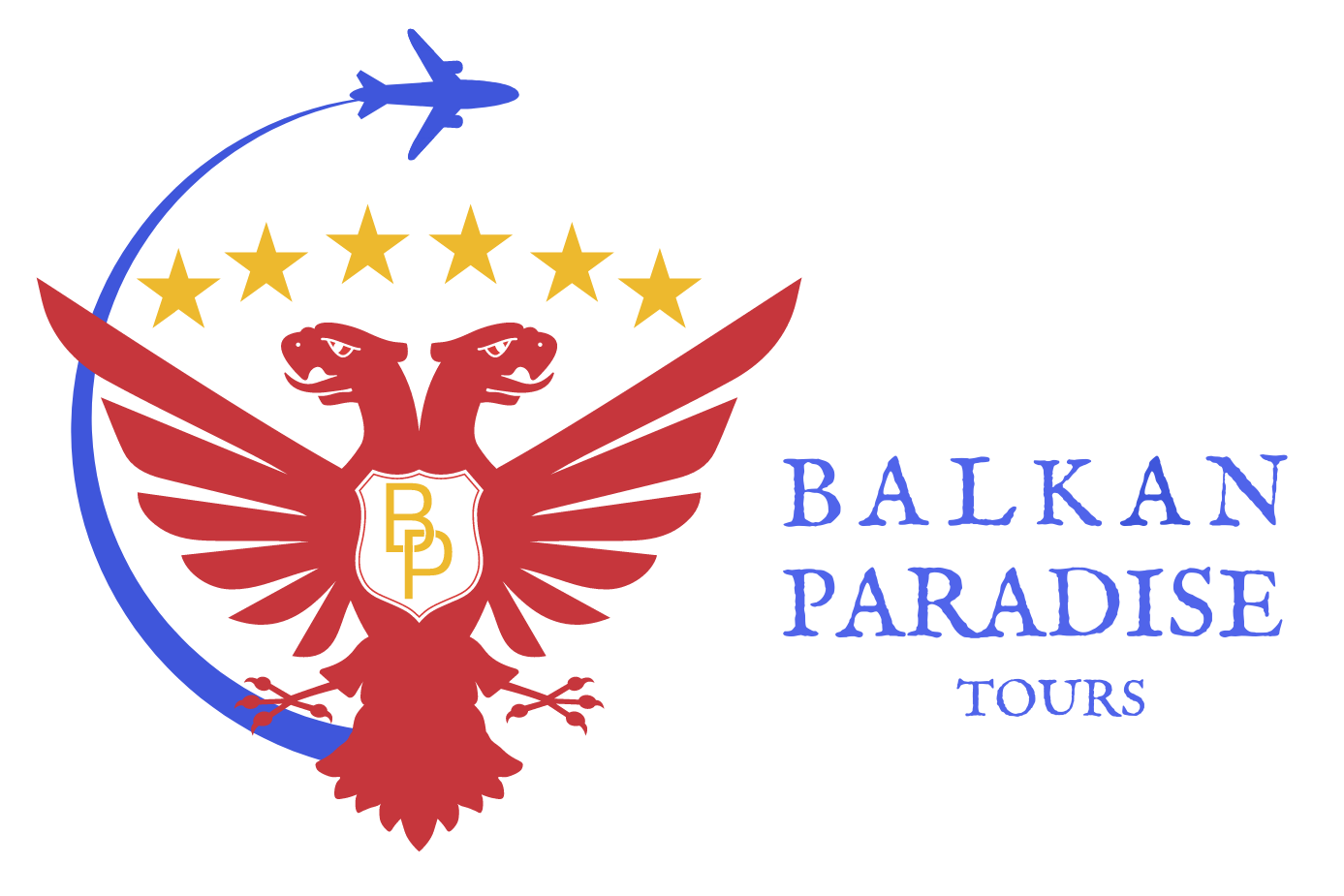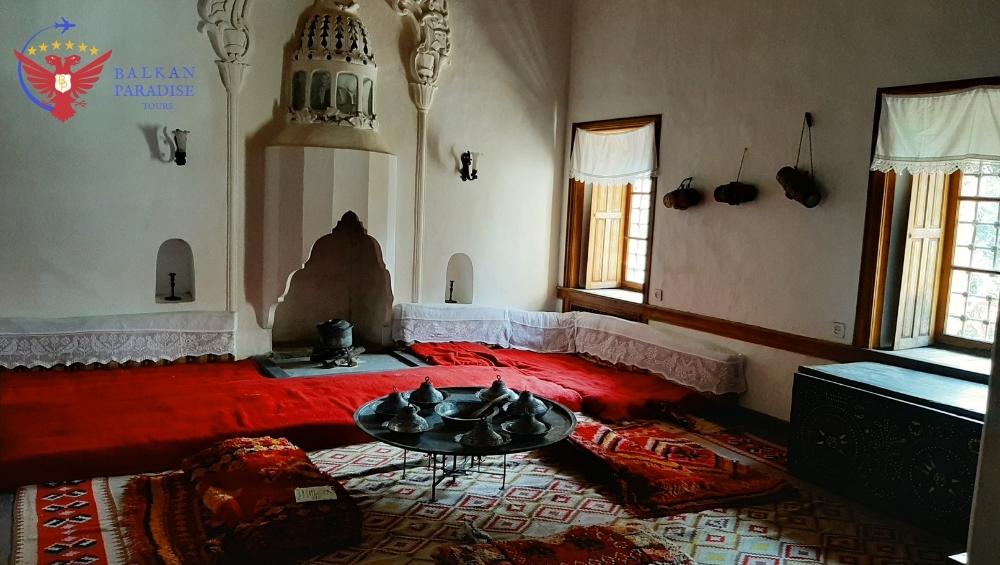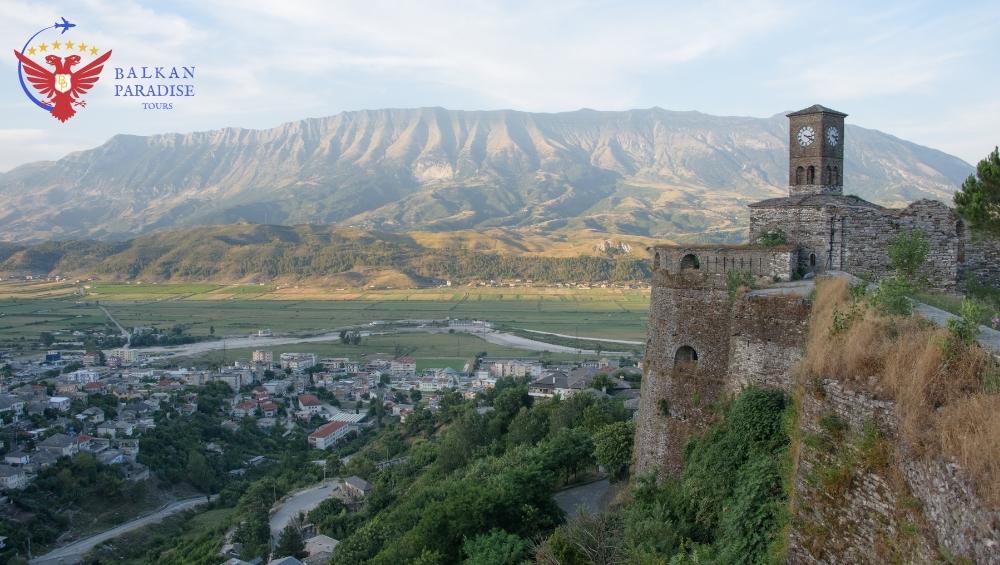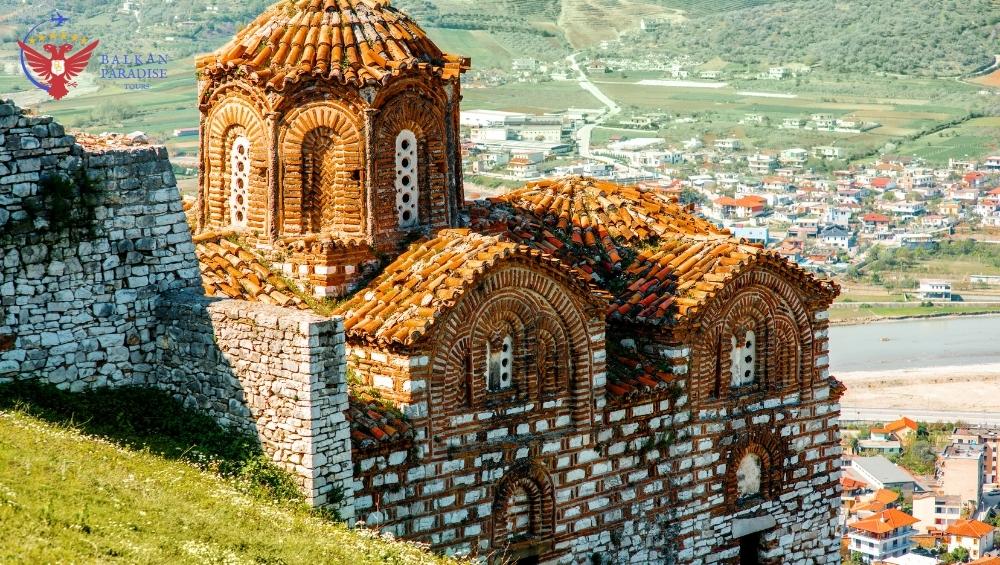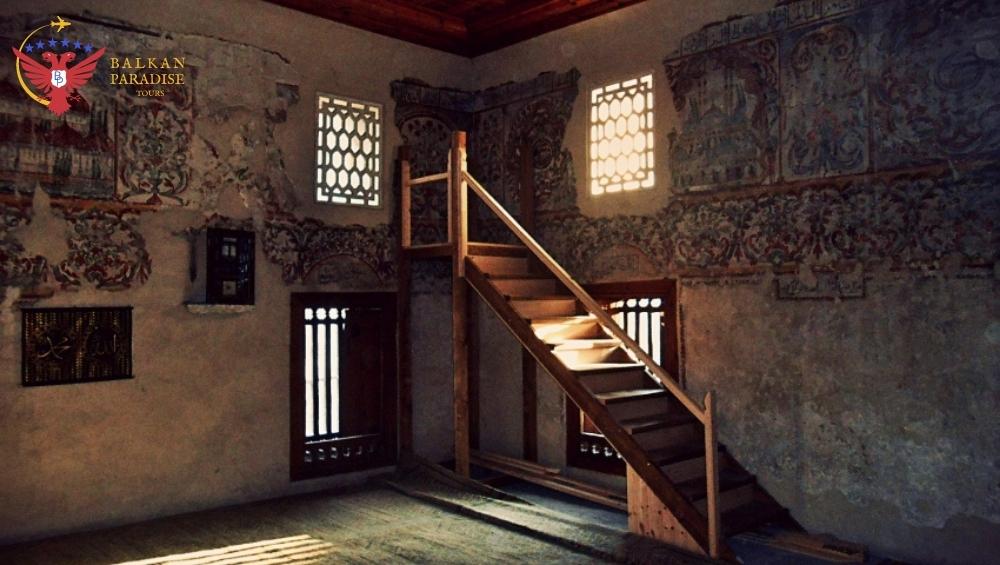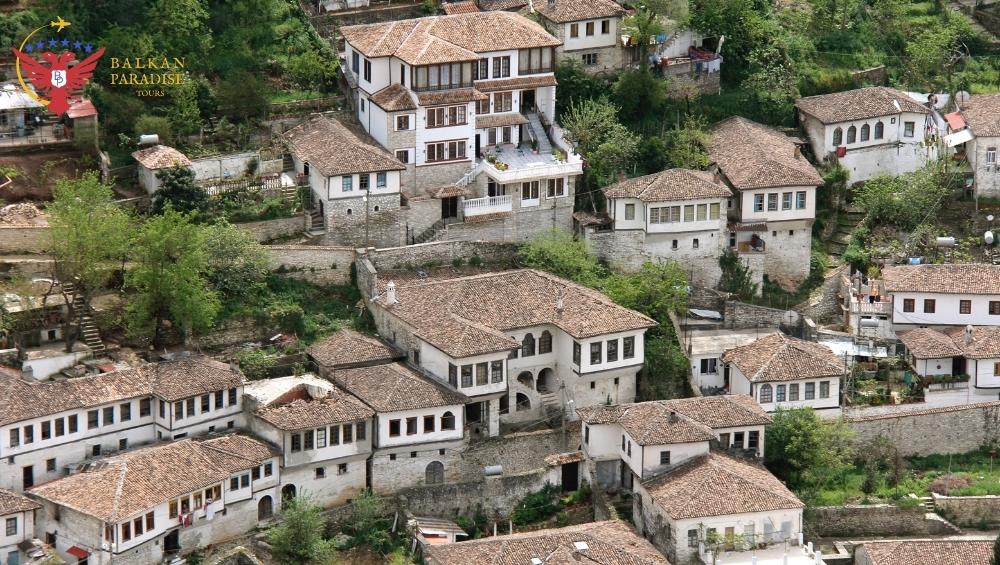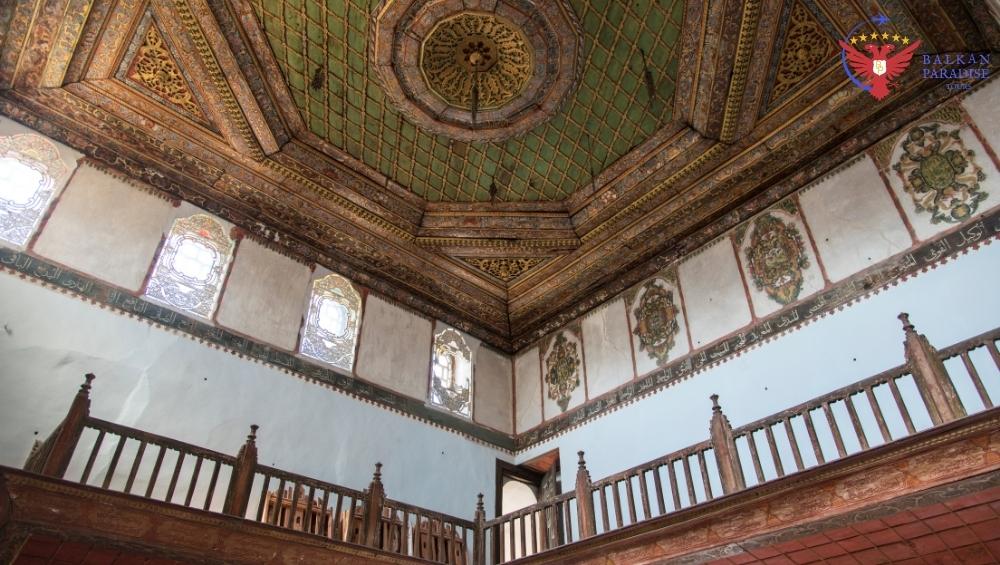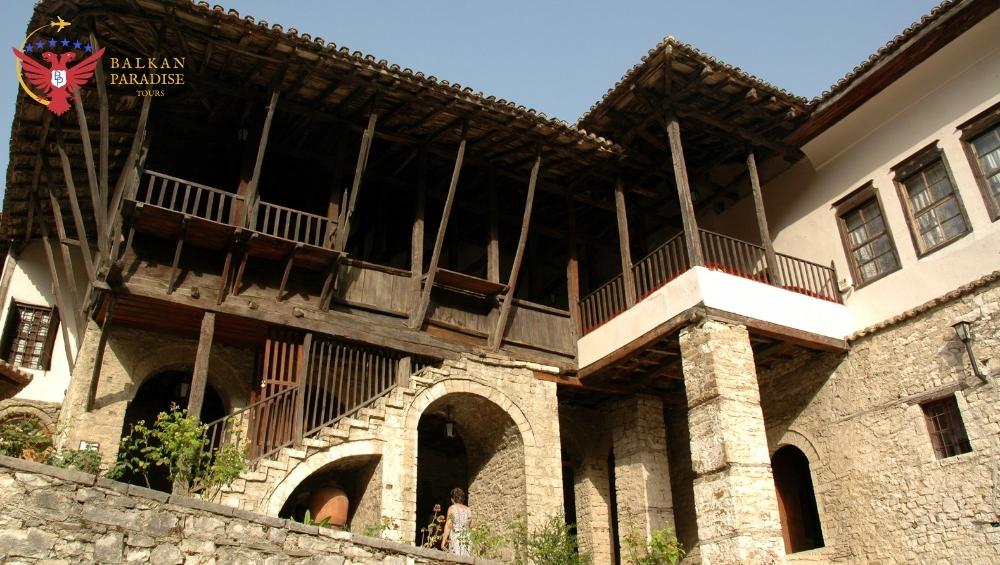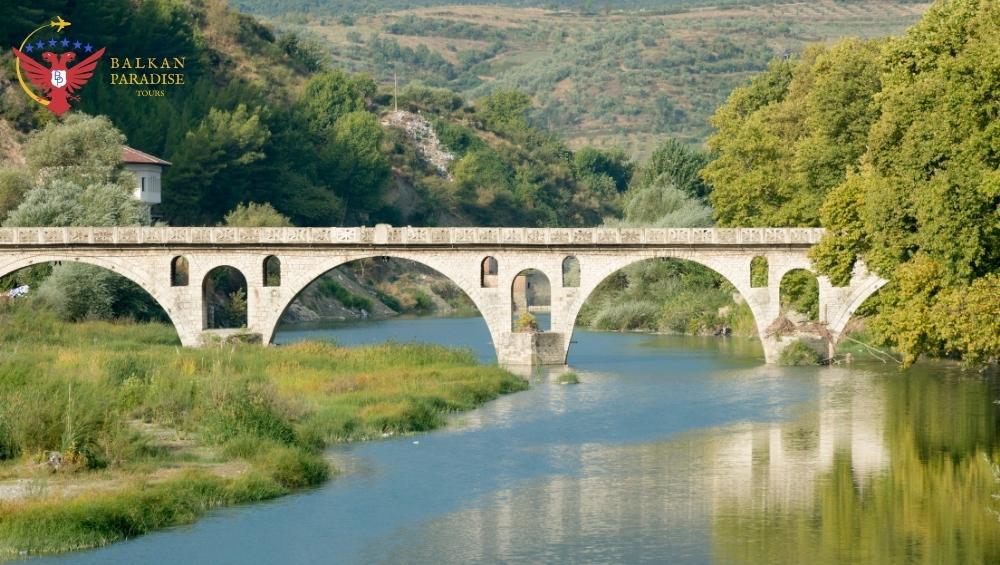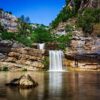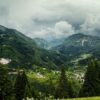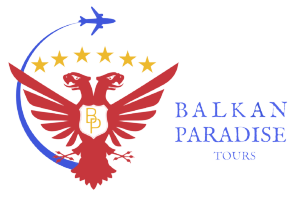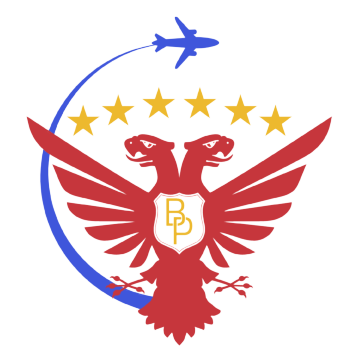Ethnographic Museum
Located in Palorto Quarter on the site of Enver Hoxha’s birth house. After the original structure burnt down, it was replaced with a model house that mirrors the town’s Ottoman-era buildings.
Like other house museums in the region, it’s a window onto 19th-century Albanian life. Inside the four-story home, you’ll find a historical display of costume, textiles and household objects – but absolutely nothing that references the former dictator.
